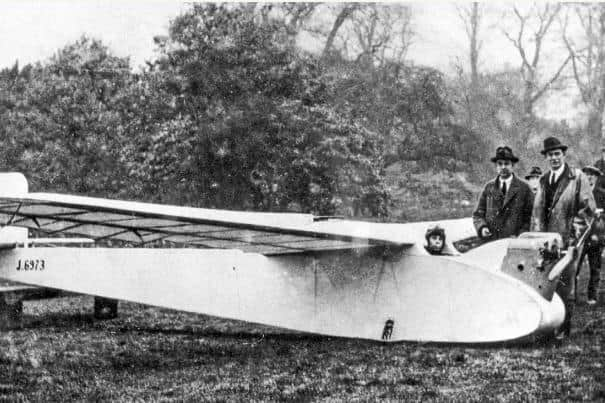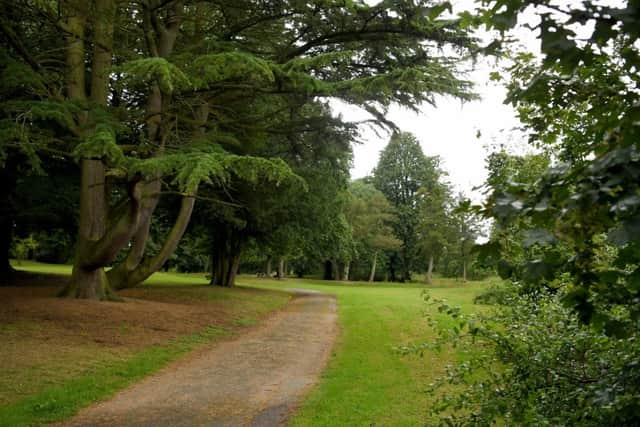Up, up and away as Preston gets set to honour magnificent men and their flying machine
and live on Freeview channel 276
The event will be launched on Ashton Park where the English Electric Wren first took to the skies in April 1923. The Wren went on to become joint-winner of an international competition for ultra-light planes by flying 87.5 miles on a single gallon of fuel. It never went into full production, but still makes the occasional flight today as part of a private collection in Bedfordshire.
To celebrate the centenary of that first test flight Preston is planning an arts project and festival that will "engage local families in exploring their heritage and provide opportunities for fun-making activities that boost wellbeing." It will culminate in a festival day on Ashton Park where the organisers plan to lay on a range of music and arts activities and host a specially choreographed performance with 100 children with wings. The event, known as the Airborne Project, is being staged by the community arts organisation Artfull which helps community groups access funding for art projects, works with schools and curates exhibitions.


Advertisement
Hide AdAdvertisement
Hide AdThe English Electric Wren was an ultra-light aircraft built at the company's Dick, Kerr factory in Strand Road. The firm's chief aircraft designer W O Manning had been working on an ultra-light project and offered to build one for the Air Ministry for £600. Construction began in February 1923 and took two months. It was given the serial number J6973 and was transported the short distance up to Ashton Park to make its first test flight. It had a wooden fuselage and wings, covered in fabric. It weighed 232 pounds (empty), had a wingspan of 37-feet and a top speed of 52 mph.
On the day. according to BAE Systems (which superseded English Electric) it was piloted by Sqn Ldr Maurice Wright of the Air Ministry, who made just three short flights. "Three days later,” says the company, he made a longer flight, this time from the sands at Lytham, where the prototype was said to have 'performed well.’ As a result English Electric decided to put it into production as an 'easy to fly' and an 'economic aircraft,' priced at £350.
"The Duke of Sutherland (then Under-Secretary of State for Air) gave a prize of £500 for a competition to establish the most economical light, single-seat British aeroplane. The Daily Mail added a further £1,000 prize for the longest flight of not less than 50-miles on one gallon of fuel, over a 15-mile triangular course based at Lympne in Kent, using an engine of less than 750cc. The competition ran from the 8th October 1923 and attracted 23 British and four foreign machines
"Two production English Electric Wrens were entered for the competition, one flown by Sqn Ldr Maurice Wright (competition No.3), the other being flown by Flt Lt Walter Longton (competition No.4). The latter shared first place and the £1,500 prize by flying 87.5 miles on one gallon of fuel. Unfortunately, and despite all the publicity gained by its success, the English Electric Wren was to gain no further production orders. No 3 was withdrawn from service in 1929. Longton’s No.4 Wren was placed in the Science Museum in London in 1924 where it remained on display for over 22-years, until it was returned to the English Electric Company at Preston for restoration.”


Advertisement
Hide AdAdvertisement
Hide AdThe plane was kept in storage near its Lancashire birthplace until 1954 when the Shuttleworth Trust asked if it could have it to include in its collection. No 3 was deemed to be beyond repair although some engine parts from were recovered and eventually used in the restoration of No.4. The first flight of the restored No.4 aircraft came in September 1956, where it reached a maximum altitude of 250 ft, engine power being the only limiting factor. Eventually, the aircraft was to reach an altitude of 1,200 ft in subsequent flights. The English Electric Wren was eventually handed over to the Shuttleworth Trust on 15th September 1957, in the presence of its designer W. O. Manning. In 1980, and after several years of 'being grounded', English Electric Wren No.4 received a complete overhaul at Warton and on 19th May 1980, it flew once again.
Today, says BAE Systems, the aircraft is still part of the Shuttleworth Collection at Old Warden, “occasionally getting the opportunity to take to the air, although due to the low power output from its aged engine, this is supplemented at launch by a team of strong volunteers and bungee cords."
Preston Council is donating £1,000 to the Air Borne project. According to a report from the project organisers, presented to Town Hall bosses: "Artfull has plans to include professional artists and a choreographer to give people the best creative experiences which support health and wellbeing in the community. They will be working with Grow Preston to reach widely in the areas local to the park and to reach people who don’t currently engage with culture in Preston. Grow Preston and the Friends of Ashton Park want to take the opportunity to provide food at the event for families, many of whom are struggling with the cost of living crisis. There are plans for a brass quintet to play music as well as a mini Caribbean Carnival event.
"We want to make sure that our first event becomes the beginning of a tradition rather than a flash in the pan."